CYBER BEGINNINGS
By Komninos Zervos
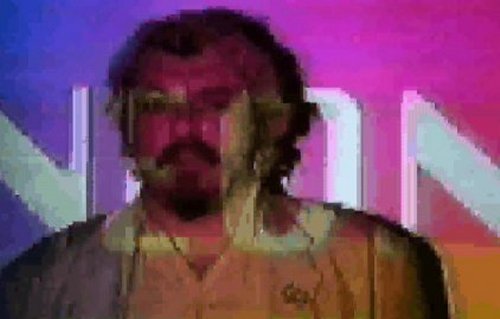
[Above] Neon Rainbow Komninos. (Photo by ABC Arts Review, 1996)
"It seems that we stop seeing, hearing, smelling as soon as we have positively identified something. At that point, we may as well replace the word for the object. Since identification usually happens quickly, we spend most of our time not really sensing our
environment, living in a world of pre-digested and abstracted memories. This explains our attraction to optical illusions and mind-altering experiences (chemically-induced or not). Those moments of confusion, where identification and resolution aren't immediate, give us a flash of the raw experience of being. These moments of confusion are also the fulcra of paradigm shifts. It's only when our conventional way of dealing with things breaks down that we can adopt another model, another way of imagining and experiencing a scenario."
"The Construction of Experience: Interface as Content" by David Rokeby: http://www.interlog.com/~drokeby/articles.html
Today I consider myself a cyberpoet but, like most people, I was scared of computers. I was terrified that I'd press the wrong button and the thing would blow up. The first experience of using one for word processing was in 1987 when I was Writer-in-Residence at Broadmeadows Technical College, a north-western outer suburb of Melbourne. Heavy, very basic, this box-like all-in-one unit, the Apple computer, allowed me to compile a booklet of student writing fairly efficiently. At Sunshine North Secondary College in 1988, the students introduced me to clip-art. A great way to decorate student's writing I thought. I could see the benefits of computers for desktop publishing but didn't see a need for me to purchase one to use in my own writing.
Computers were relatively expensive then, especially for a poet who'd decided that writing, performing and publishing poetry was the way they were going to make their living. Fortunately 'komninos the performance poet' was also getting work at schools facilitating
creative writing/poetry classes. These residencies meant access to computers.
When I arrived in Sydney in 1988 with the wife and kid (6 weeks old) for the Carnivale Young Writer's residency, we stayed at Barbara Brooke's house in Marrickville whilst she was on study leave. Her partner was a computer programmer and his bedroom/office was an out of bounds area with many machines that went ping. Computers could still intimidate me.
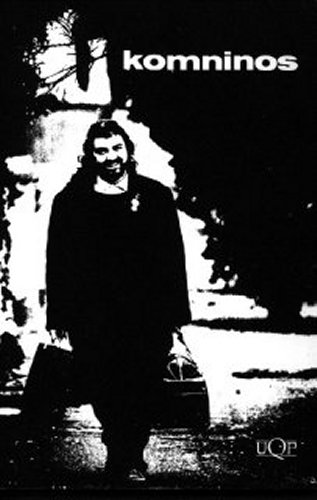
|
When we returned the following year to undertake residencies at schools in Sydney as part of my Australia Council Community Writer's Fellowship, we stayed at Lynn and John Tranter's house whilst they travelled to the USA. John immediately typed my name into a software program on his computer, which then spewed out a long list of anagrams. Wow! I thought, this guy is weird, his basenji dogs are even weirder.
But honestly he probably first alerted me to the fact that the machine had creative possibilities. Later that year I started a thing called 'wordsports' at the Harold Park Hotel on Saturdays. This game was like theatresports but with styles of poetry: haiku, acrostic, rhyme, list, monologue, etc played by teams. I and others who played this game enjoyed the immediate sensation of playing with words, of the moment of brilliance, poetic moments of a fleeting rather than ever-lasting nature. A little like Tranter's anagrams.
At Brisbane Grammer in 1991 the technical assistants, who were IBM guys, decided to make me sweat through keyboard commands on the PC with a very early version of Word-Perfect, and as the residency was finishing introduced me to pull-down menus that I could have been using all that time - they were mean geeks but I got a first draft of a style manual written and could appreciate how the computer was useful for personal large writing projects. |
[Above] Travelling Komninos. (Photo by Mark Wilson, Melbourne Age, 1986)
The following year at St.Vincent's Boys Home in Sydney's western suburbs I was introduced to graphic drawing programs and colour on the computer by the boys I worked with and I found that the experience of composing on the computer with students was rewarding to both of us. Later that year I was able to prepare two of my own manuscripts, 'the venus of marrickville', a re-working of Shakespeare's 200 stanza poem in rhyming pentameter, 'Venus and Adonis', into street language. And a re-working of a play I had written, 'Rap It Up' as a teenage fiction novel. I was amazed that the technical person at the University of Central Queensland at Rockhampton could transfer files between mac and pc computers, I thought they hated each other, but with computers it's not personal. And I was amazed at how easy it made organising large bodies of text, in organising sequences of text, and in editing texts. Still I resisted purchasing a personal computer. Surviving as a poet was financially restrictive even though I was earning enough to support my family. It also meant a great deal of time travelling away from home alone. The family had grown to two with the birth of Zanthi and Max was ready for preschool.
It was not until I saw Beverley Farmer using her brand new Mac Powerbook laptop computer on the second Queensland Outback Writer's Train in 1992 that I started to want my own computer. Beverley's computer was a compact, light, mobile, writing machine. It could play music and store all her manuscripts, in fact, everything she had ever written. With some of the money I received as part of the Ros Bower Community Artist Award later in 1992 I purchased my own Apple Powerbook 100 with a massive 40mb hard-drive and 4mb of ram. I was wired.
My first writing project using the new tool was a play about the workers of the Pasminco zinc processing plant in Hobart. Terry Whitebeach, who had compiled the oral histories, was a co-writer on the project. We spent many days slaving over that hot computer at the Tasmanian Writer's Centre house at Battery Point above Salamanca Place. The computer proved its mobility and suitability for such a project.
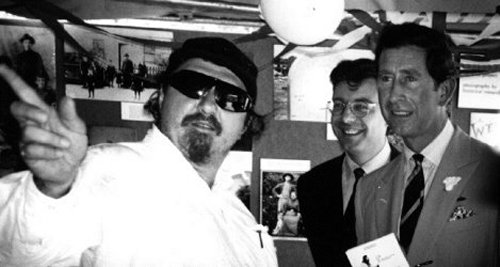
[Above] Komninos and Charlie. (Photo by Effie Alexakis, Australia Day, 1992)
The next year I was liberated from financial restraints by being awarded a Category B Writer's Fellowship from the Australia Council. My first book, 'komninos', had been published and I was able to complete much of the writing for my second publication with UQP, 'komninos by the kupful'. It was a great year for experimentation, with greater effort being put into writing poetry that suited the page rather than the stage. I studied the techniques of the French surrealist writers and applied them to my own writing. I opened myself up for further experimentation. I came to realise my poetry had tended to be like the poetry of English performance poets i.e. realist, humour based, extended rhyme or over-rhyme, or of a conversational nature like the poetry of USA beat poets. My poetry became less confessional and more open to interpretation, less absolute and more explorative, but still attempting to evoke emotional response. I was aware that some performance poetry is poorly transcribed to printed words, and that some extremely interesting things can be done with poetry in the spoken word venue with a live audience that can never be captured in a book. Jas H Duke, Amanda Stewart, Edwina Blush and Ania Walwicz to come to mind.
But I was also interested in exploring the written poem as well. The abstractionist experimentation of the late modernist and post-modernist poetry of the 1980s was not offering the attraction as a direction I wanted to go at the time. The surrealist-styled poetry in 'komninos by the kupful', although written for the page, is performable and contains less of the poet 'i'. At Richmond in NSW at the University of Western Sydney, Hawkesbury Campus, I experimented with concrete poetry.
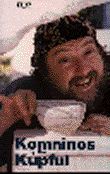
|
I discovered the draw program of my Microsoft works program. The arduous procedures of cutting and pasting letraset lettering onto pages of the concrete poets could now be reproduced in a fraction of the time. But still I got the feeling it was not really progressing the art, just doing it faster. Perhaps making it more expendable, a more of-the-moment experience. Part of the fascination of concrete poetry of old was to subvert what the printing press could produce, and in the idea that someone had taken the time to make what seems machine-made the result of intense human intervention. |
[Above] Cover 'komninos by the kupful'. (Photo by Craig Voevodin, UQP, 1994)
In London in 1994 on a British Council-funded tour with English performance poet, Attila the Stockbroker, I found the buzz word there was 'multimedia'. The CD-ROM 'Poetry in Motion' had been released and on my way home to Australia I bought a CD-ROM player for my Powerbook. In a motel room in Nyngan in outback NSW, not long after my return, I played the CD-ROM, postage-stamp-sized black and white videos on my powerbook screen of world famous poets reading their poems: Allen Ginsberg, Charles Bukowski, Amiri Baraka, Michael Ondaatje, Anne Waldman, Gregory Corso, John Giorno, John Cage etc. I was impressed and envious. I saw a way to capture poem and performance in the one medium. Being so far from home and family, having time on my hands, being charged by multi-media fever and always experimental, I embarked on the use of the computer as a creative tool.
Using the draw function of MS Works I drew the word fall. I created several files, each time repositioning the word 'fall' further down the page. So that when I quickly clicked through page preview it was like a slow slide show or animation of the word 'fall' falling down the page.
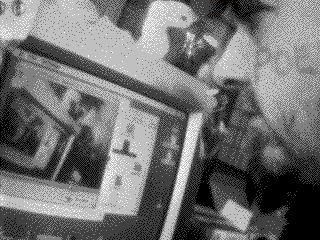
|
Motion, kinetic text instantly became a possibility. Up until then text was fixed and static, although interpretation was not always so. Motion of text, the ability to move it around a page, was definitely a new tool I was keen to explore.
When in Cobar on the next leg of my tour I used the spreadsheet function of the MS Works program. Utilizing a method of the surrealists, the exquisite corpse, I created a column of 15 adjectives inspired by the country I was in, the next column contained 15 nouns that came to mind when thinking of western NSW, the next a column of verbs representing bodily functions, the next a column of adjectives this time chosen at random from a dictionary, and the last column of 15 nouns again at random from the dictionary. |
[Above] Self portrait. (Photo by Komninos Zervos, 1998)
When the spreadsheet was complete the sort function re-arranged the words in the columns creating new combinations of sentences. Here are just two of the millions of combinations:
"instantly the pub breathes its frightening voice once informal loneliness sits in dehumanised time"
After ten years of being on the road as a performance poet I decided to return to study and enrolled in the Creative Writing Masters at University of Queensland in 1995. We moved to Brisbane in July 1994 and through the Metro Arts Centre found a flyer for a multimedia training intensive at Queensland University of Technology operated by ANAT (Australian Network for Artists and Technology). The three week course was just what I needed to introduce me to 2D and 3D animation programs, graphic and sound manipulation programs, and video editing programs. I purchased a new you-beaut computer with multimedia capabilities and my Masters had as its goal the exploration of multimedia as a new medium for poetry. The result was a CD-ROM of cyberpoetry, as I called it to distinguish it from poetry in print and in performance. It is poetry that is computer generated, that is moving text, that is two and three dimensional and that incorporates voice and sound. It is a poetry that could not be published as a traditional print publication. Whilst it resembled film-making the text created the images and evoked moods and was always the principle object of every animation and movie.
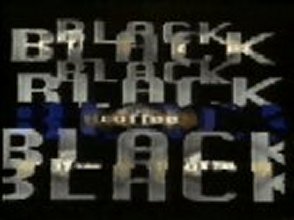 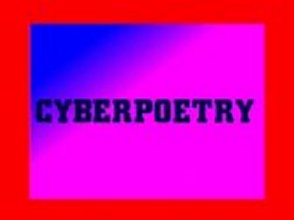
[Above Left] Still from cyberpoem "black coffee nights". (Image by Komninos Zervos, 1995). [Above Right] Still from cyberpoem "cyberpoetry". (Image by Komninos Zervos, 1995).
In 1996 I established my cyberpoetry website and had to learn html programming and a whole bunch of new software products that were largely free and experimental.
http://www.gu.edu.au/ppages/K_Zervos
http://www.uq.net.au/~zzkozerv/work.html
It was then that I found a lot of activity in this area, within Australia and globally. It was great to find others who had been experimenting with poetry in this medium, it was like finding a whole new community. As well as coming into contact with computer artists like Adam Wolter, John Tonkins, Edit Vidans, and Paul Brown who had been into computer art for years, I also met some people on-line who were pushing the boundaries. Virtual Artists in South Australia and Merlin in Sydney, collectives of artists working in this new medium. I was impressed by the hypertext/hypermedia of Dave Sag, a programmer at VA
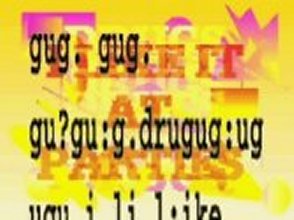 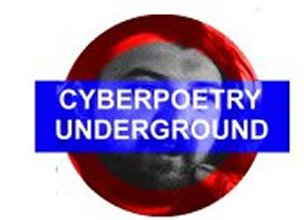
[Above Left] Still from cyberpoem "drugs". (Image by Komninos Zervos, 1995). [Above Right] Cover od cd-rom, "cyberpoetry underground." (Image by Komninos Zerovs, 1998)
http://www.davesag.com/mood_creation/index.html
who was exploring the hyperlink as a literary device, and the electronic Writing Research ensemble
http://www.ensemble.va.com.au/contents_js.htm
and their collaborative hypertexts and digital experimentation. I was impressed by the interactive pieces of Gary Zebington from Merlin (http://murlin.va.com.au/eyespace/) which allowed for more than just input from the user by clicking, you could actually type your text into his poetry machine. Another site where I found cyberpoetry in every issue published on the web was Rosie Cross's cyber feminist zine 'geekgirl': http://www.geekgirl.com.au/geekgirl/008fruit/haiku.html
More familiar names from the literary world began manifesting as websites. Of the earliest was John Tranter's Jacket ezine: http://jacketmagazine.com/

The international nature of the site, poems and articles from poets and scholars with international reputations and credibility make this an exceptional Australian poetry resource. The fact that it really concentrates on the print publication of poetry and its related activities, particularly of the past, serves to strengthen John Tranter's internationalization of the Australian poetic discourse begun in 1968. However the ezine does not endeavour to tackle poetry being produced specific to this multimedia web, what i call cyberpoetry, that it is published on and distributed through.
For a more Australian flavour, try Brentley Frazer's: http://www.retortmagazine.com/
or Coral Hull's Thylazine: http://www.thylazine.org/
the poets union inc., sydney: http://members.ozemail.com.au/~poetinc/
or visit the ezines listed at: http://www.ozpoet.asn.au/resources/ezines.html
or the various Australian poets' sites at Gillian Savage's Ozpoet site: http://www.ozpoet.asn.au/poetsites.html
Overland Express, the on-line foray of the poetry magazine 'Overland', on the other hand, attempts and invites experimentation with hypertexts and hypermedia poetry; http://www.overlandexpress.org/
as does the Cyberpoet@SLV site; http://emedia.experimedia.vic.gov.au/cyberpoet/
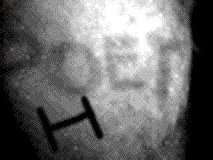 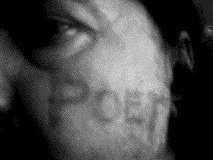 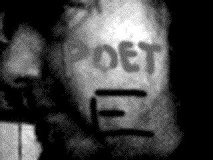
[Above Left to Right] Self Portraits. (Images by Komninos Zervos, 1998)
as do the sites of poets like Philip Salom and Jayne-Fenton Keane. Both of these poets work in collaboration with programmer partners to produce cyberpoetry and interactive multimedia interfaces for their poetry. Meredith Kidby provides the computer skills to Philip Salom's texts: http://pandora.nla.gov.au/pan/10555/20010630/www.netspace.net.au/_psalom/mmm.html
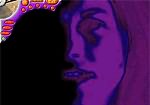
|
and David Keane translates or transmediates the performative energies of Jayne Fenton Keane: http://www.poetinresidence.com/
Convergence as well as collaboration characterize this new field of cyberpoetry as exemplified in the works of Melbourne new media poet Adrian Miles: http://hypertext.rmit.edu.au/vog/ |
[Above] "Screen shot from 'The Stalking Tongue', Vol.1.". (Image by Jayne Fenton Keane, 1998)
Needless to say Australian poets in cyberspace are receiving attention for their work and recognized by emerging cyber-literature establishments like the Electronic Literature Organization: http://www.eliterature.org/index2.html
Webartery: http://webartery.com/defib/webarterymembers.htm
the Electronic Poetry Center: http://epc.buffalo.edu/
the UBPoetics Email Discussion List: http://listserv.acsu.buffalo.edu/archives/poetics.html
and trAce Writers community in the UK: http://trace.ntu.ac.uk/
In fact one ozzie poet, cyberpoet, codepoet, hypermedia poet, call her what you like but poet she is, Mary-Anne Breeze or mez net_wurker as she is more affectionately known on-line, has certainly made an impact internationally. With her own brand of language processing called mezangelle she has been reviewed and featured by all major international poetry ezines as well as receiving many prestigious awards for her work (or wurk). With no previous prominence in Australian poetic culture, all of a sudden a poet who has had virtually nothing in print, is being discussed in literary magazines, newspapers and university English departments. This I believe is a major breakthrough for Australian poetry: http://www.hotkey.net.au/~netwurker/
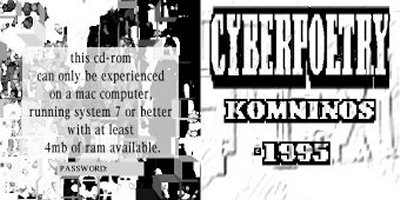
[Above] Cover of cd-rom, "cyberpoetry 1995". (Image by Komninos Zervos, 1995)
Whilst many of the same theories of writing apply equally to poetry composed for the page, the stage and the digital domain, the exploration of poetry in cyberspace offers for me, and many others, an opportunity to play with words in a new space. New theories are also being proposed and books by Loss Pequeno Glazier, 'Digital Poetics - the making of e-poetry', Espen Aarseth's 'Cybertext - Perspectives of Ergodic Literature' and Jerome McGann's 'Radiant Textuality' all begin to ascribe a new poetic and aesthetic to what is happening. All of them have a strange mixture of scientific experimentation and poetic aspiration, their theories tied to their on-going practical problem-solving with web technologies and poetic forms and content. We seem to have entered a phase of convergence of the writer/theorist/critic with the whole end-user experience being more of a writerly experience as well as a readerly one, more of a collaborative experience than a solitary one, and more of an of-the-moment rather than universal or enduring experience.
Postmodernist theory certainly prepared us for the random interventions, tangential associations, bricolage composition, layered information, multiple interpretations and multitudes of meanings for meaning itself that are characteristic of poetry in cyberspace today. Image and sound, as well as words, are a part of language, a way in which we 'read' the world. The poet's vocabulary in cyberspace has expanded to include images, sound, animated sequences, random choices in direction, colours and 3D spatial arrangements. The end-user in cyberspace is also prepared to contribute more to the making of the poetry that cyber-poem and end-user can create.
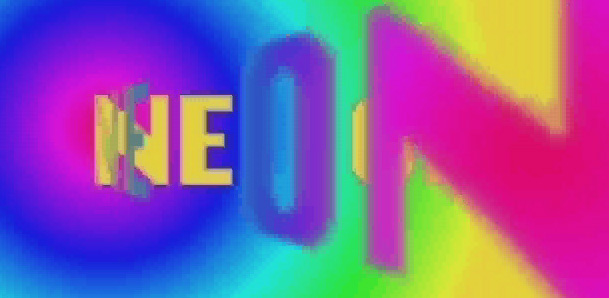
[Above] Still from cyberpoem, "black coffee nights". (Photo by Komninos Zervos, 1995)
My most recent works are made with Macromedia Flash:
http://beehive.temporalimage.com/archive/43arc.html
http://www.wordcircuits.com/gallery/childhood/index.html
http://www.gu.edu.au/ppages/K_Zervos/umov.html
http://www.gu.edu.au/ppages/K_Zervos/ispin.html
http://www.gu.edu.au/ppages/K_Zervos/colorwriter.html
I see them as timelines within timelines. They have no temporal length as such. Unlike a performance poem, for example, that can be sounded in 58 seconds, or a printed poem that is one and a half pages long, my Flash cyberpoems hopefully attract the end-user into the poem, offer certain enticements for engagement and finish when the end-user has decided they have had enough. Enjoy!
About the Writer Komninos Zervos
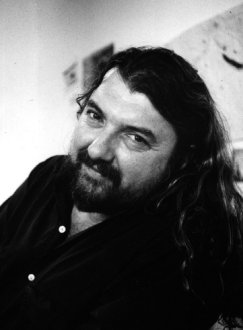
|
Komninos, performance poet, has been poeting since 1985 professionally, taking his poetry to schools, community groups, hotels, music venues, prisons, coffee lounges and universities, radio and television and now the internet. Komninos has had three plays performed by professional theatre companies in Sydney and Brisbane. In 1992 Komninos received the Australian Human Rights award for Literature and in 1991 was awarded the Australia Council's Ros Bower Award for outstanding achievement in community arts. In 1995 Komninos completed a Masters of Arts in creative writing at the University of Queensland, in which he authored a cd-rom of cyberpoetry for his dissertation. In 1997 Komninos travelled to London to be writer in residence at Artec, a multimedia training and resource centre in Islington, where he authored a cd-rom, cyberpoetry underground. Komninos is a full-time lecturer and convenor of the CyberStudies major in the School of Arts, Griffith University, Gold Coast Campus. |
[Above] Photo of Komninos Zervos by Effie Alexakis, 1992.
I Next I
Back I
Exit I
Thylazine No.6 (September, 2002) |



